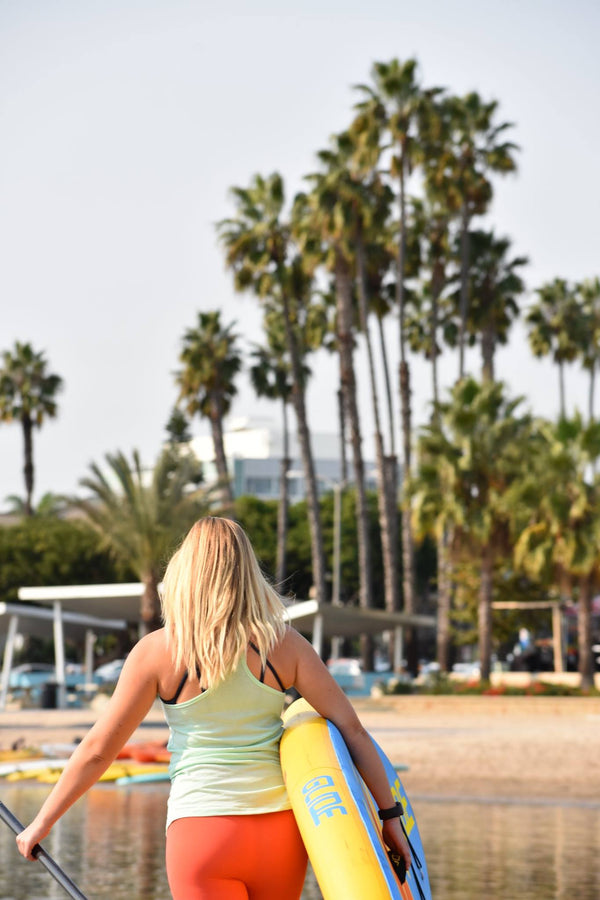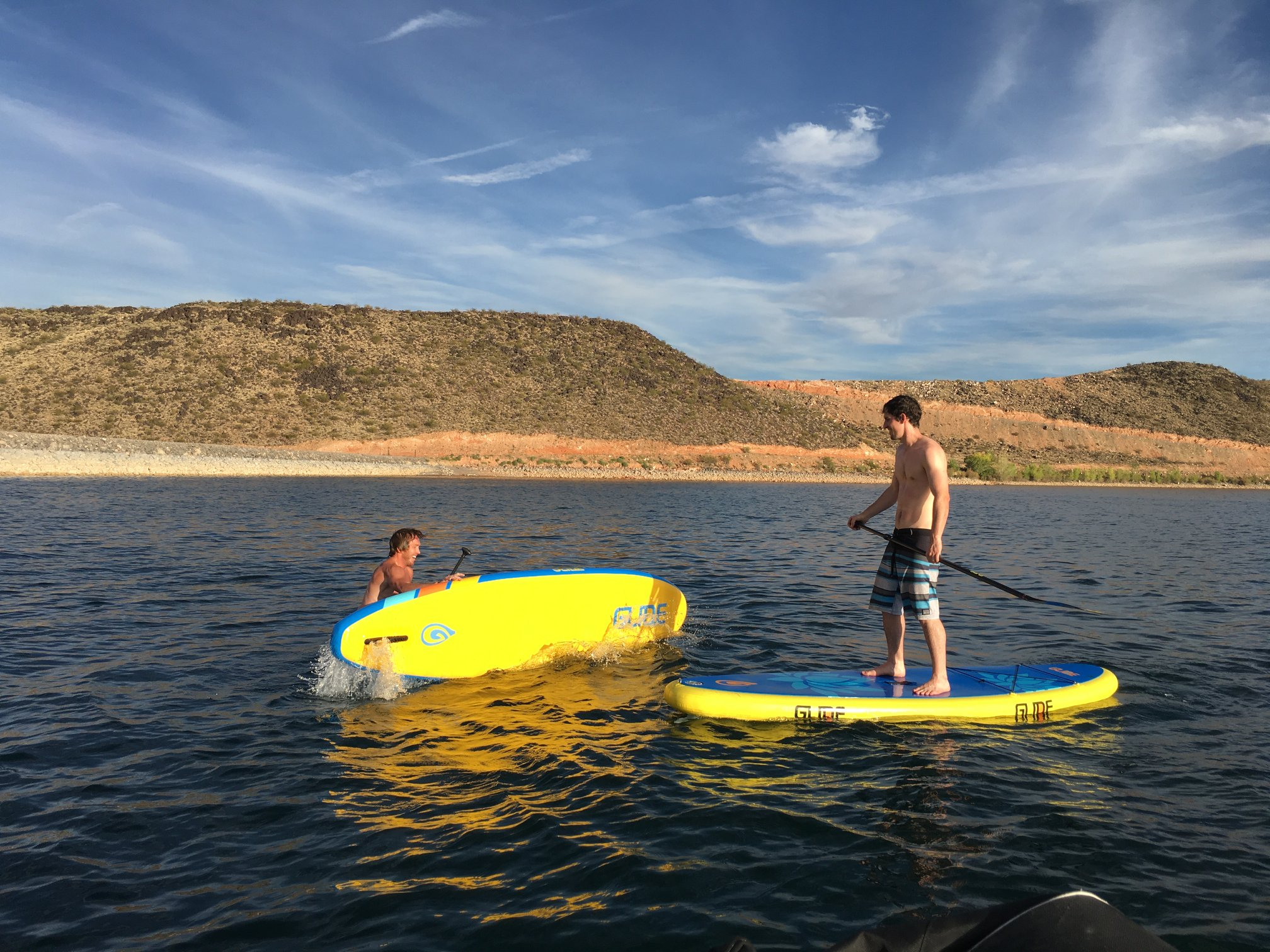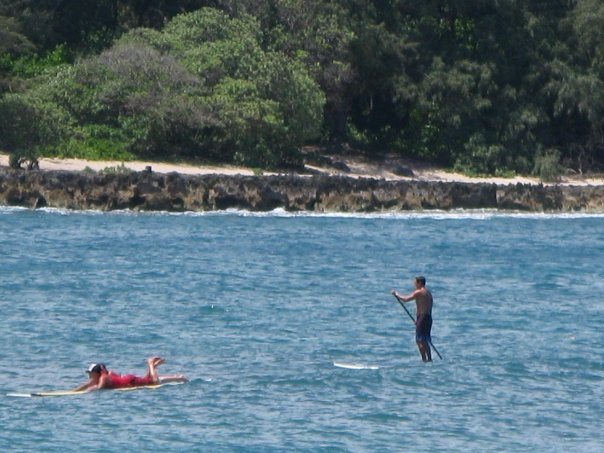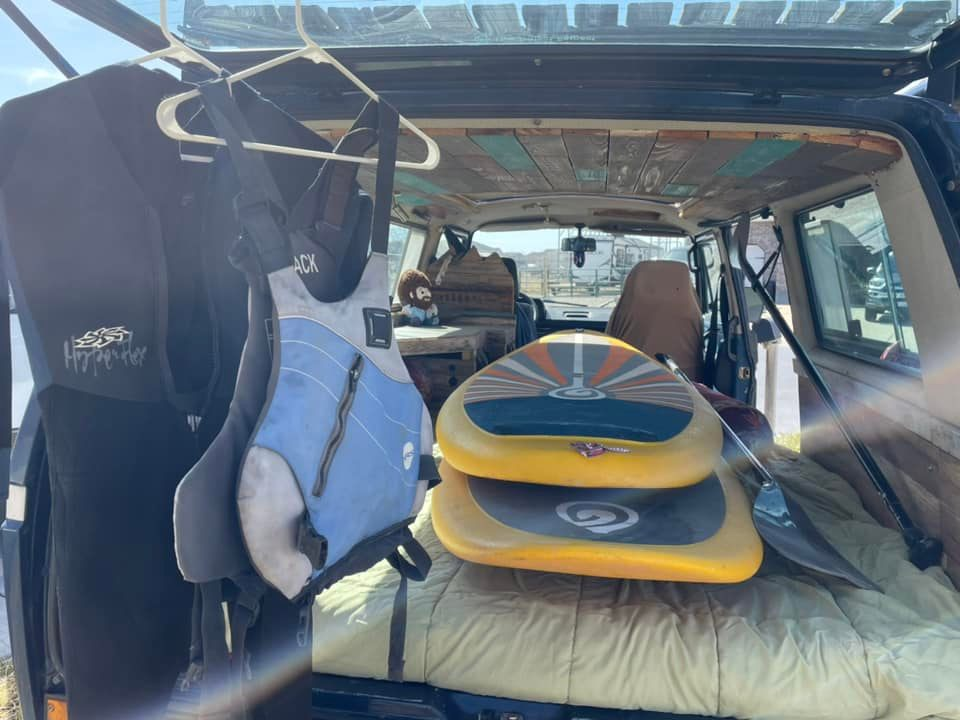
Paddle Boarding 101: The Beginner Paddle Boarding Guide
Ready to start paddle boarding? This beginner-friendly guide covers everything from choosing the right board and paddle to mastering balance, safety, and SUP techniques. Learn how to paddle with confidence and make the most of your first adventures on the water.
Paddle boarding is one of the easiest and most rewarding water sports to learn — and with the right board, most beginners are standing and paddling within their first session. This guide walks you through everything you need to know to get started, from choosing your first SUP to learning basic strokes, staying safe, and avoiding common beginner mistakes.
Table of contents
Stand up paddle boarding (SUP) isn’t just a sport—it’s an invitation to explore, relax, and connect with nature in a whole new way. Whether you’re craving peaceful paddles on a glassy lake or dreaming of catching small waves, learning to paddle board is easier than you think.
This beginner paddle boarding guide will walk you through everything you need to know to stand up, paddle out, and enjoy the ride with confidence.

The Beginner Paddle Boarding Guide Begins with the Board
The first step in your paddle boarding journey is selecting the right board. With so many choices available, it can feel overwhelming. Boards generally fall into these categories:
- Inflatable Paddle Boards – Lightweight, portable, and easy to store. Perfect for beginners and travelers.
- Hard Boards (Epoxy or Fiberglass) – Offer better performance and glide but require more storage space.
- Specialized Boards – Designed for yoga, fishing, racing, or touring.
Beginner Tip: Most beginners do best with an inflatable all-around board that’s at least 32” wide. Wider boards give you more stability, making it easier to find your balance.
👉 For more help, check out our full guide: How to Choose an Inflatable Paddle Board
Selecting the Right Paddle and Accessories
A paddle that fits you correctly makes paddling more efficient and comfortable. The general rule: stand the paddle upright and raise your arm overhead. Your wrist should rest on the handle.
Other essentials:
- Leash – Keeps you connected to your board if you fall off.
- PFD (Personal Flotation Device) – Required by law in many areas. Choose a lightweight, SUP-friendly version.
- Dry Bag – Protects your phone, snacks, or extra layers.
- Sun Protection – Rash guards, hats, and reef-safe sunscreen are musts.
Learning the Basics: Standing, Balancing, and Paddling
1. Start on Calm Water
Lakes, bays, or slow-moving rivers are best for beginners. Avoid wind and chop at first.
2. Begin on Your Knees
Start in a kneeling position near the center of the board. Place your hands on the rails for balance.
3. Stand Up Slowly
Bring one foot forward at a time, placing them shoulder-width apart. Keep your knees slightly bent.
4. Find Your Stance
Look forward, not down at your feet. A soft bend in the knees helps absorb movement.
5. Learn the Paddle Stroke
Insert the paddle blade fully into the water ahead of you, pull it back alongside the board, and exit near your feet. Alternate sides every 3–4 strokes for straight tracking.

Mastering Advanced Techniques
Once you’re comfortable, add new moves to your skillset:
- Step-Back Turns – Shift one foot behind you and pivot the nose of the board out of the water for quick turns.
- Cross-Bow Stroke – Great for efficient turns without switching paddle sides.
- Pivot Turns – Master balance by moving toward the tail of the board and spinning it quickly.
These techniques increase agility, especially useful in surf or winding rivers.
Exploring Different SUP Activities
One of the best things about paddle boarding is its versatility. Here are a few ways to enjoy it:
- SUP Yoga – Combine fitness and mindfulness on calm water.
- SUP Fishing – Stable boards like the Glide O2 Angler make fishing accessible anywhere.
- Touring – Cover longer distances on boards like the Glide Quest.
- Racing – Build speed and endurance on sleek, narrow boards.
- Casual Cruising – Perfect for families, pets, or just soaking in the scenery.
Safety Tips and Water Etiquette
Safety should always come first.
- Always wear your PFD and use a leash.
- Check weather and water conditions before heading out.
- Respect local rules and right-of-way on the water.
- Paddle with a buddy whenever possible.
- Be mindful of wildlife and protected areas.
- Stay hydrated—bring water in a reusable bottle or hydration pack.
👉 Want more? Read our article: Top Mistakes to Avoid When Paddle Boarding
Maintaining Your Paddle Board
Joining the SUP Community
Paddle boarding is more fun when shared.
- Join local SUP groups – Many towns have meetups or social paddles.
- Take a lesson or class – A certified instructor can fast-track your skills.
- Follow SUP brands and ambassadors on Instagram for tips and inspiration.
- Enter a local race or charity paddle – Even as a beginner, these events are welcoming and fun.

Final Thoughts: Your SUP Journey Starts Here
Paddle boarding is one of the most accessible water sports in the world, and with the right foundation, you’ll quickly see why it has become so popular. What starts as a casual day on a calm lake can evolve into SUP yoga, fishing adventures, or long-distance touring.
The key is consistency and mindset. Expect to fall in, laugh, and keep going. Every session builds balance, strength, and confidence. Pair that with a stable, durable board and safe habits, and you’ll set yourself up for years of SUP enjoyment and discovery.
And remember—the SUP community is welcoming and supportive. From family outings to solo meditative paddles, you’ll always find connection on the water. SUP isn’t just a workout—it’s a lifestyle that promotes health, mindfulness, exploration, and endless adventure opportunities.
Every stroke forward is a step toward new experiences, whether that means discovering hidden coves, paddling alongside wildlife, or simply finding peace at sunrise. Once you take your first paddle, you’ll realize it’s less about perfection and more about presence. The water doesn’t judge—it simply invites you to return again and again.
Paddle boarding is a fantastic way to enjoy the outdoors, improve your fitness, and connect with nature. With this ultimate guide to paddle boarding for beginners, you're now equipped with the knowledge and tips to embark on your SUP journey.
Remember, every paddle stroke is progress—so don’t rush the learning curve. Celebrate small wins, practice consistently, and give yourself time to grow comfortable on the water. Before long, you’ll be exploring farther, paddling stronger, and unlocking new adventures with every outing.
Embrace the process, stay safe, and most importantly, have fun out on the water!
So grab your paddle, step onto your board, and take that first stroke. Adventure, fitness, friendship, laughter, and fun are waiting just beyond the shoreline. The sooner you begin, the sooner you’ll see why SUP has captured the hearts of millions worldwide.
FAQs
Is paddle boarding hard for beginners?
No. Most people pick it up quickly, especially on a wide, stable beginner board.
What type of paddle board should a beginner get?
An inflatable all-around SUP is best. Look for one that’s 10–11 ft long and 32–34 inches wide.
Do I need lessons to learn paddle boarding?
Lessons can help, but most beginners can learn on their own in calm water with a stable board.
What should I wear paddle boarding?
Quick-drying clothes or swimwear. In colder water, a wetsuit is recommended.
Do I need special gear?
At minimum: a paddle, leash, and Coast Guard–approved PFD. Most inflatable boards come as complete kits.
How do I stand up on a paddle board?
Start on your knees, place one foot at a time near the carry handle, then rise slowly with knees slightly bent.
Where’s the best place to learn?
Flatwater lakes, ponds, or calm bays with little wind or boat traffic.
How much does a beginner paddle board cost?
Expect to pay $600–$900 for a reliable inflatable board that lasts 5–10 years.





